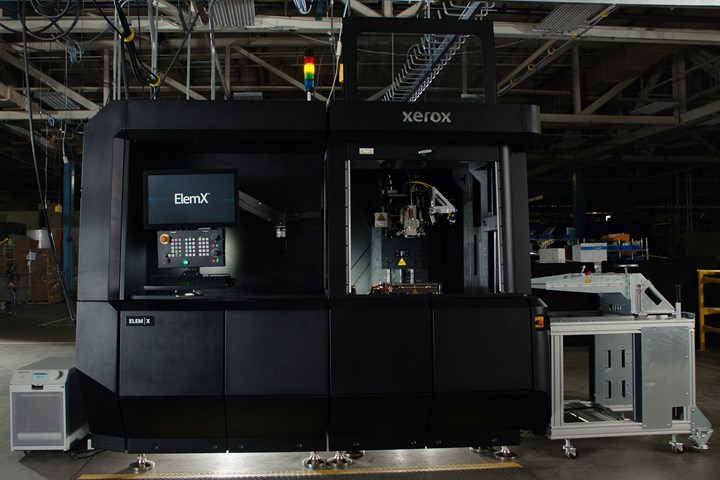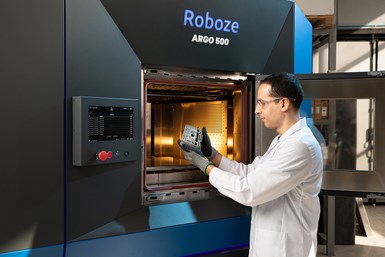Siemens Announces New Additive Manufacturing Partnerships
Siemens has announced new collaborations with Xerox and Roboze to accelerate the industrialization of additive manufacturing and metal 3D printing.
Share
Read Next
Xerox ElemX liquid metal 3D printer equipped with Siemens Sinumerik CNC control system.
Photo Credit: Siemens
Siemens announced a new collaboration effort with Xerox Elem Additive Solutions aimed at strengthening the metal additive manufacturing (AM) capabilities of both businesses.
Siemens has purchased an ElemX metal 3D printer, adding it to its fleet of additive machines inside the Charlotte Advanced Technology Collaboration Hub (CATCH). The CATCH facility focuses on the industrialization of AM by working with machine builders, material suppliers and end-customers. The ElemX reportedly uses Xerox’s liquid metal AM that uses cost-effective aluminum wire and incorporates Siemens’ Sinumerik 840D sl control platform with its embedded digital twin technology to optimize the printing process.
ElemX is said to be a user-friendly 3D metal printer that addresses supply chain resiliency for transportation, aerospace, defense and industrial manufacturing. The printer is easily deployed, and reportedly requires no special facility modifications for operation. The ElemX also requires minimal post-processing and therefore provides a faster time-to-part.
Siemens has implemented the Roboze Argo 500 industrial 3D printer in its CATCH facility that further industrializes AM in the U.S. Photo Credit: Siemens
In addition to its partnership with Xerox, Siemens has also announced a strategic partnership with Roboze aimed at creating complete workflows for the industrialization of 3D printing, as well as increasing the production opportunities of companies involved in the energy, mobility and aerospace sectors.
This new collaboration in 3D printing between Siemens and Roboze, a leader in industrial 3D printing of super polymers and composite materials, is intended to increase the productivity, competitiveness and efficiency of manufacturers that use AM.
The main activities of the partnership will focus on digitalization and automation projects to address the current and future challenges of the industry, while also creating new opportunities for success.
Related Content
-
Precision Meets Innovation at IMTS 2024
After attending IMTS, it's clear that the integration of advanced technologies is ready to enhance precision, efficiency and automation in mold manufacturing processes. It’s a massive event, so here’s a glimpse of what the MMT team experienced firsthand.
-
3D Printing Innovates Hot Runner Manifold Design
Metal 3D printing combined with a conventionally machined manifold block overcomes flow shadows on valve gates and offers faster color changes while providing closer system pitch centerlines between cavities.
-
A 3D Printing Retrospective
A personal review of the evolution of 3D printing in moldmaking throughout the past 25 years.


















